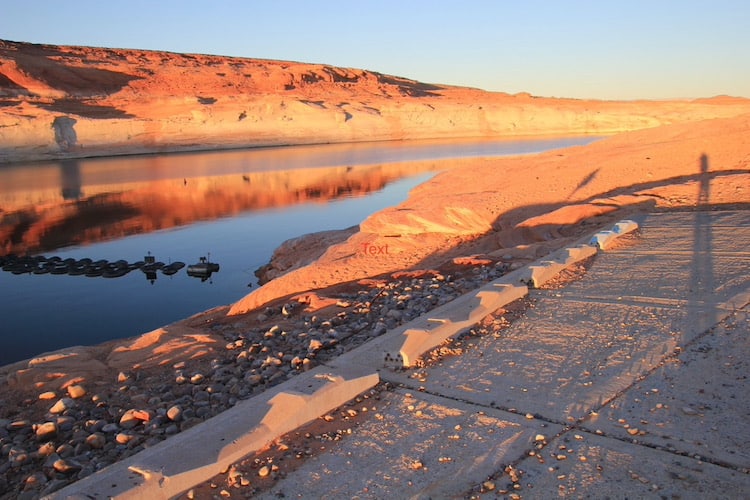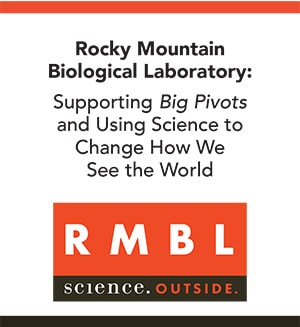Are the political institutional agreements of the 20th century in the Colorado River Basin flexible enough to be useful in the 21st century aridification?
Brad Udall asked the biggest question in the three days of the Colorado River Water Users Association conference held in Las Vegas during mid-December. How can an average 85% of snowpack, he asked, yield a runoff of less than 30%? It wasn’t one of those trick questions, like you see in the memes on Facebook. It is a question that that should interest the 35 to 40 million people who depend, at least in part, on the Colorado River and its tributaries, including most of Colorado’s 5.85 million residents.
In his presentation, Udall, a climate scientist at Colorado State University, answered his own question. He said he gets annoyed by people who use the word “drought” to describe what is happening in the Colorado River Basin. More appropriate, he said, is “aridification.”
Even when it snows a lot, runoff tends to disappoint—a lot—because of increased evaporation and transportation and then water-absorbing dry soils. Springs have become warmer, the snowpack disappearing more rapidly, hotter summers baking the soil even more.
Those who met 100 years ago in Santa Fe to broadly divvy up the Colorado River assumed more than 20 million acre-feet of annual flows. The compact they delivered identified roughly 17.5 million acre-feet to be shared between the seven states and Mexico with some left over for evaporation. Even in the last century, the river delivered a little bit less than this optimistic assumption. In the 21st century, river flows have dropped 20%.
This is one of seven big-picture stories from 2021 identified by Big Pivots that involve Colorado.
Lower basin states have reduced their withdrawals, but still the bank account of the reservoirs, 95% full in 2000, are projected to be 30% full by April 2022.
In August, the federal government – as operator of the dams—declared a shortage. In December, speakers representing both the Department of Interior and its sub-agency, the Bureau of Reclamation, the operator of the dams, urged attention to the things that can be done almost immediately to prevent the water in Powell dropping below the level necessary to produce electricity. Despite strong snows in the headwaters, that could happen by 2023, conceivably sooner.
Infrastructure and agreements designed in the 20th century are coming up short. Drought may end, but as Udall has documented, warming almost certainly will not.
“A fundamental mismatch between the 20th century expectations of what the river can provide and the 21st century reality,” said two long-time Colorado River observers in a December journal entry called “Green Light for Adaptive Policies on the Colorado River.”
Anne Castle, a former Interior Department official who is now with the Getches Wilkinson Center at the University of Colorado Law School, and John Fleck, of the University of New Mexico, also point out that new scientific research predicting future climate change impacts on the Colorado River flows will be even more serious than past modeling had suggested. One study conservatively estimates warming temperatures will cause declines in overall river flows of 20% to 30% by mid-century and 35% to 55% by century’s end. This is directly related to warming, not ephemeral drought.
“These types of decreases in flows are well beyond the capacity of existing operational regimes to manage,” they wrote.
Castle and Fleck urged state and water officials to “seize this opening, cognizant of its likely limited duration, and cement new agreements that steer river operations in a more sustainable direction,” they wrote.

You can see the high-water mark for Lake Mead in the background of this photo of a marina near Hoover Dam. Photo/Allen Best
At the conference in Las Vegas, a water official was asked whether the Colorado River Compact needed to be replaced by a new agreement, one that recognized that the century-old compact was premised on assumptions of water flows in the river that, even then, were unsupported by the scientific record. The water official, Colby Pellegrino, from Southern Nevada Water Authority, scoffed that this was the sort of thing that journalist and sometimes water lawyers liked to talk about. But earlier, I had consulted Eric Kuhn, the former general manager of the Colorado River Water District in Colorado. He had also long thought reopening the compact was ill advised, because of the risk. But lately, he said, he had begun to wonder whether it was time to start from scratch again.
The afternoon after the conference ended, I drove to The Las Vegas Boat Harbor along the shores of Lake Mead, now far below the bathtub ring representing the high-water mark for the reservoir.
The next day I drove to Glen Canyon, and again I found a boat ramp, the bottom of the concrete far above the water level. Powell was 28% full that day, the lowest it’s been since it began filling in the 1960s.
Looking into 2022
What will be the response of Colorado and other basin states to this shifting hydrology of the Colorado River Basin?
An addendum:
This was received in response to a previous but related story:
It’s not all climate change
Thanks for another informative edition (Big Pivots 5)). I always learn something new and enjoy your insights of the ongoing issues facing our beautiful West.
I want to call attention to your statement regarding “climate change having profound consequences now (best seen in the Colorado River Basin and in our escalating wildfires).”
Statements like this would be so much better received (by those of us more to the center of the political scale) if they included some of the other reasons for profound consequences in our environment as well.
Topics such as gross mismanagement of natural resources and environmental policy, partisan in-fighting, and the ever-increasing budget for battling wildfires (smell any conflict of interest there…?) need inclusion as additional if not more impactful reasons for the threats to our resources than the non-catastrophic rise in temperatures we’re experiencing.
I agree that our climate is being negatively impacted by many of our practices and support the shifting of some methods of energy generation. We can do much more to mitigate lax and often toothless pollution policies but curbing CO2 (surely a non-pollutant in spite of what Congress and their asinine opinion says) emissions is not one of them (we kinda need it to live, ya know…).
But to imply that “climate change” is the one and only source for the destruction of our environment is misleading and disingenuous. If you’re going to make a blanket statement on how we are decimating our world, let’s include more than just one of the culprits, shall we? Lest we scare the young ones into thinking we only have 12 years left…
Thanks again for your good work.
Hal Partenheimer
Dallas TX
Why support Big Pivots?
You need and value solid climate change reporting, and also the energy & water transitions in Colorado. Because you know that strong research underlies solid journalism, and research times take.
Plus, you want to help small media, and Big Pivots is a 501(c)3 non-profit.
Big grants would be great, but they’re rare for small media. To survive, Big Pivots needs your support. Think about how big pivots occur. They start at the grassroots. That’s why you should support Big Pivots. Because Big Pivots has influence in Colorado, and Colorado matters in the national conversation.
- How much water remains in the aquifers of southeast Colorado? - April 18, 2024
- Keeping water rights on the Yampa while utilities figure out future technologies - April 18, 2024
- How can Colorado add this much renewable energy by 2040? - April 18, 2024





